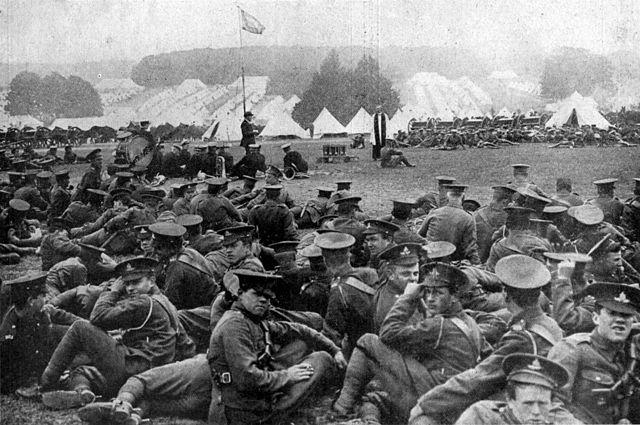32nd Division (United Kingdom)
The 32nd Division was an infantry division of the British Army that was raised in 1914, during the First World War. The division was raised from volunteers for Lord Kitchener's New Armies, made up of infantry 'Pals battalions' and artillery brigades raised by public subscription or private patronage. The division was taken over by the War Office in September 1915. It served in France and Belgium in the trenches of the Western Front for the duration of the war. It saw action at the Battle of the Somme, the Pursuit to the Hindenburg Line, the Defence of Nieuport, the German spring offensive, and the Allied Hundred Days Offensive beginning at the Battle of Amiens. After the Armistice it marched into Germany as part of the Army of Occupation.
Group of Tommies of the 2nd Battalion, Manchester Regiment, part of the 32nd Division, after the advance on the Ancre, possibly around Serre, January 1917.
Brigadier-General Frederick Lumsden, VC, killed in action 4 June 1918 while in command of 14th Brigade; posthumous portrait by H. Donald Smith.
Maj-Gen (later Gen Sir) Cameron Shute.
The New Army, often referred to as Kitchener's Army or, disparagingly, as Kitchener's Mob,
was an (initially) all-volunteer portion of the British Army formed in the United Kingdom from 1914 onwards following the outbreak of hostilities in the First World War in late July 1914. It originated on the recommendation of Herbert Kitchener, then the Secretary of State for War to obtain 500,000 volunteers for the Army. Kitchener's original intention was that these men would be formed into units that would be ready to be put into action in mid-1916, but circumstances dictated the use of these troops before then. The first use in a major action of Kitchener's Army units came at the Battle of Loos.
Alfred Leete's recruitment poster for Kitchener's Army.
1914 poster describing terms of enlistment
A Church of England service at the 10th (Irish) Division's camp at Basingstoke in 1915






